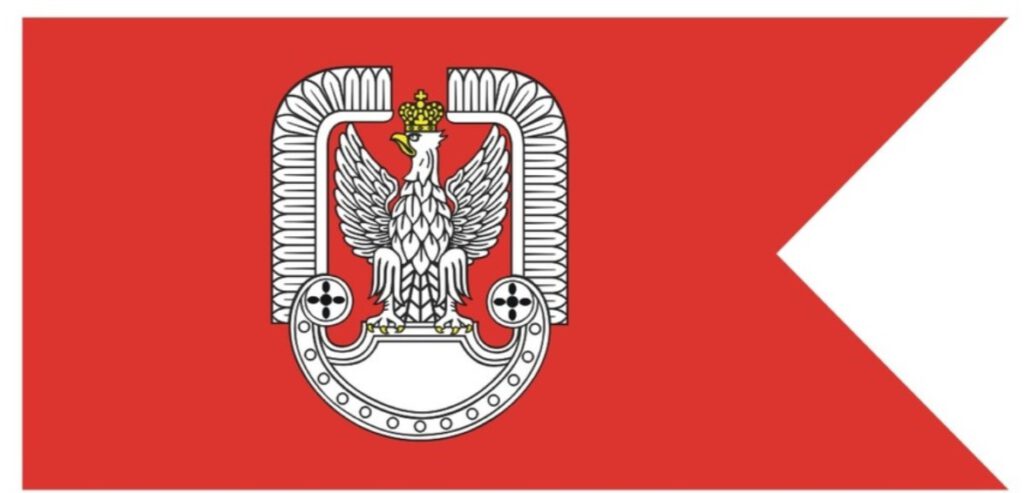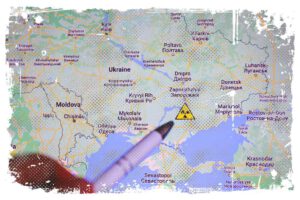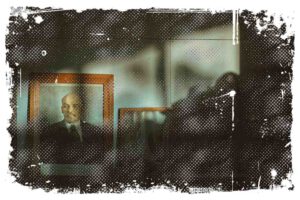The Polish Air Force is responsible for protecting Poland’s airspace, maintaining air superiority, and supporting other types of troops in military operations. It also plays a significant role in NATO’s integrated air defense system. Polish pilots also take part in international missions such as Operation Inherent Resolve and Baltic Air Policing.

Air Force Basic Structures
Poland’s Air Force is a branch of the Armed Forces, and its main duty is to secure and defend Poland’s airspace. They operate according to national defense, working closely with other European civil-military systems. Our Air Force units may also take part in operations outside of Poland’s borders.
The Air Force is divided into three main divisions:
- Airborne Forces
- Air Defense Forces
- Radio Technical Forces
Tactical aviation, including fighter jets, fighter-bombers, reconnaissance planes, and transport aircraft, they all fall under the Air Force’s purview, as do air defense brigades and missile regiments. The Air Force also includes units responsible for radar surveillance and ensuring the safety of Air Force operations.
↳ PRO TIP: Do you like traveling? Then before you buy any ticket or book an attraction, check if it's available in this worldwide Viator Database. You may save a lot of money and time. No need to thank me :)
Their goals include eliminating potential enemy targets in the air, on the ground, and on the water’s surface. They perform reconnaissance, combat airborne attacks, and defend all types of armed forces, infrastructure, and designated areas.
Polish Air Force Bases
| Air Force Base Name | Location | Aircraft |
|---|---|---|
| 1st Transport Aviation Base | Warsaw | Mi-8, PZL W-3, Gulfstream G550, Boeing 737 |
| 8th Transport Aviation Base | Cracow | CASA C-295, PZL M28, Mi-2, Mi-8 |
| 12th Unmanned Aircraft Base | Mirosławiec | Aeronautics Orbiter |
| 21st Tactical Aviation Base | Świdwin | Su-22M4, Su-22UM3K[111] |
| 22nd Tactical Aviation Base | Malbork | MiG-29 |
| 23rd Tactical Aviation Base | Minsk Mazowiecki | MiG-29 |
| 31st Tactical Aviation Base | Poznan | F-16 |
| 32nd Tactical Aviation Base | Łask | F-16 |
| 33rd Transport Aviation Base | Powidz | C-130E, PZL W-3[112], PZL M28, Mi-17 |
| 41st Training Aviation Base | Dęblin | TS-11, Mi-2, PZL SW-4, Aermacchi M-346 |
| 42nd Training Aviation Base | Radom | PZL-130, PZL M28 |
Symbols and Flags of the Air Force in Poland
The symbol of the Air Force is a regal eagle with its head facing right, perched on an amazon shield, encircled by hussar wings.

The flag of the Polish Armed Forces is a red banner with two triangular tips and features an image of a crowned eagle.

White-Red Checkerboard
The white and red checkered pattern, which is another symbol of the Polish Air Force, was first used as a personal emblem of pilot Lieutenant Stefan Stec. He flew with the checkerboard on his aircraft for the first time on November 15, 1918. It was during his flight from besieged Lviv to Warsaw. At the time, the checkerboard had four fields with no frame.

It was believed that the checkerboard met all the criteria for becoming a national insignia: it was original, composed of the colors of the Polish flag, and could easily be painted on the wings.
On December 1, 1918, the Chief of Polish Army officially adopted the checkerboard as the national insignia for aircraft in the Polish Forces. Prior to this day, these aircraft had been marked with various and random designs in the national colors, such as red and white stripes, eagles, and shields.
Clothes and Outfit
The standard outfit for a professional Air Force soldier includes:

- An air force fur coat
- An air force Olympic blouse
- Air Force pants (both regular and summer versions)
- A steel-colored long-sleeve shirt-blouse
- A black tie
- A trouser belt
- Black summer socks (and winter socks)
- Half-shoes (or winter boots)
Hooded sweatshirts for purchase in stores:

Air Force exit jacket pattern 644/MON:

The Polish Air Force’s Training Program
The Air Force Officers Academy in Deblin, the Air Force NCO Academy in Koszalin and Deblin, and the Air Force Training Center in Koszalin – they are all responsible for training specialists in all areas of the Air Force. The Air Force command headquarters is located in Warsaw.
Becoming a Pilot
The road to becoming a pilot in the Air Force is a long process. Recruitment for military academies begins earlier than at other colleges. Obviously, both men and women can apply to the Air Force Military Academy.
Pilot candidates must pass several tests including psychological examinations, a thorough five-day medical examination, a fitness test, a recruitment interview, and an exam in a flight simulator. After these detailed examinations, they are given categories that reflect their aptitude.
- Category A is for jets and supersonic aircraft
- Category C is for helicopters and transport aircraft
Experience Improves Chances
It doesn’t require prior flying experience, but it can certainly give candidates an edge. Skills such as glider piloting can boost chances of sitting in the cockpit. During initial training, candidates will have the opportunity to familiarize themselves with the F-16 simulator. Those who make it into the Air Force Military Academy begin their journey as privates.
With dedication, effort and experience, cadets have the chance to work their way up the ranks – from corporal to sergeant.
Guaranteed employment
Graduating from the Air Force Military Academy opens doors for employment opportunities. Upon graduation, cadets are commissioned as second lieutenants in the Polish Army, which automatically gives them a military pilot job.
They are relocated to air bases and continue their careers as pilots. The academy also trains specialists in fields such as air traffic control and aircraft navigation.
The Polish Air Force’s Equipment
The Polish Air Force’s primary aircraft is the F-16 (48 units). However, the air force also has a diverse range of planes, including multi-role aircraft. There are around 16,000 soldiers serving in the Polish Air Force, and the army is equipped with around 260 aircraft and helicopters.
The MiG-29, developed in the USSR, is another polish multirole aircraft. It is capable of carrying armaments for firing at ground targets such as unguided bombs and missiles. Recently, modernization of these aircraft has been carried out, including replacing avionics and electronic equipment, enabling them to serve as air defense aircraft.
Another aircraft in the Polish Army’s inventory is the Su-22. It was brought to the country in 1984. The Airforce has 18 of them in stock.
The Su-22 M4 version is equipped with automatic guidance and bomb-dropping systems. They simply do not require visibility of the target.
2016 saw the arrival of the first Aermacchi M-346 Master (Bielik) aircraft. These machines are specifically designed for advanced pilot training and air combat, but can also be adapted for close support and air defense tasks. In 2023, the Polish Air Force have a fleet of 16 M-346s.
Please check my other article I wrote, there are much more statistics: Exploring the Polish Air Force’s Fleet: Complete List of Planes
Helicopters
In addition to the previously mentioned aircraft, the Polish Air Force also operates the Mi-2 and Mi-8 helicopters. They both remember the Soviet Union. The Mi-17, meanwhile, is a transport helicopter that can be outfitted as an armed artillery platform.
Poland also has its own multipurpose helicopter, the W-3, which is used by various countries such as the Czech Republic, Spain, Vietnam, and South Korea.
In May 2021, the Polish Armed Forces signed a contract to acquire four sets of Bayraktar TB2 drones, which are considered the backbone of Ukrainian defense. The drones are highly effective at destroying enemy units, The contract includes six drones, mobile control stations, and SAR radars.
In light of Russia’s aggression towards Ukraine, NATO has decided to strengthen its eastern flank. The Polish Air Force will be reinforced with AH-64 Apache helicopters, which are equipped for fighting armored weapons and supporting ground forces in combat. We will also receive CH-47 Chinook transport helicopters, F-15 and F-35 multirole fighters, and CV-22 Osprey variator aircraft.
Polish Air Force in Foreign Missions
After WWII, Poland had little experience with air missions. Below are those in which our aircraft and pilots participated.
Inherent Resolve
The Polish Air Force has been actively engaged in the fight against the Islamic State, by deploying 150 soldiers and four F-16C/D fighters in 2016. The operation, named „Inherent Resolve,” aims to eradicate the terrorist group from Iraq and Syria. Our Polish F-16s carry out reconnaissance missions to support the coalition troops.
Polish F-16s In NATO Baltic Air Policing Mission
The Baltic Air Policing operation has been carried out since 2004, which is when Lithuania, Latvia and Estonia joined the North Atlantic Alliance. These countries do not have their own fighter jets. The Alliance aircraft take off from air bases in Iauliai, Lithuania, and Amari, Estonia.
In December 2022, the Polish Military Contingent took over command of NATO Baltic Air Policing at the Lithuanian base in Iauliai.
The Secret History of the Polish Air Force
The Polish Air Force has a history dating back to 1918. It was when Poland regained its independence. Despite the tumultuous events throughout the century, the Air Force has remained steadfast in protecting the Polish sky.
Today, the Air Force continues to uphold its century-old tradition while undergoing constant modernization to adapt to the changing environment.
Situation During Cold War
Before 1951, Polish military aviation relied mostly on propeller planes, mainly from the World War II era, which were Soviet demobilized machines obtained as the USSR modernized its air force. In the early 1950s, the first jet aircraft were delivered to the People’s Army Air Force. They were fighter planes like the Yak-23 and MiG-15, as well as the MiG-17 in 1961.
Despite the supply of Soviet aircraft, their licensed production continued in Poland. The MiG-15 debuted in 1952, and the MiG-17 debuted in 1955. Additionally, a assault version was created in 1964.
In the 1990s, following the fall of the Soviet Union and the end of the Cold War, Poland’s military aviation underwent significant modernization and restructuring. The Air Force and National Air Defense Forces were merged in 1990 to form the Air Defense Forces. In 2001, the Air Defense Forces and the Air Force were once again merged to form the current Polish Air Force.
In recent years, the Polish Air Force has been modernizing its fleet with new aircraft such as the F-35, K2 Black Panther and other transport plane. Additionally, the Air Force has been actively participating in NATO-led operations and exercises, as well as in UN peacekeeping missions.
Best Polish Fighter Pilot of World War II – Stanisław Skalski
After the fall of Poland, Skalski was evacuated to Romania and eventually made his way to France where he joined the French Air Force. He quickly established himself as a skilled pilot and eventually transferred to the British Royal Air Force. He flew with the RAF’s No. 145 Squadron, where he became the top-scoring Polish ace of the Battle of Britain with 14 confirmed kills.
After the fall of France, Skalski was evacuated to Great Britain where he continued to fly with the RAF. He later served in the Middle East and eventually became a squadron leader. Skalski was a highly decorated pilot. He receiving numerous medals and honors, including the Distinguished Flying Cross and the Virtuti Militari. It is Poland’s highest military decoration.
He is considered one of the greatest Polish aces of World War II and his legacy continues to be celebrated in Poland and around the world.
During Poland’s defensive war in 1939, Stanislaw Skalski set a record for Polish pilots. He continued flying in the RAF’s 501st Fighter Squadron, where he shot down several enemy planes. Unfortunately he was shot down himself, but survived the crash.
In 1941, he flew over Western Europe as a member of the 306th Fighter Squadron. He shot down up to five German Messerschmitts. In 1942, he became commander of the 317th Squadron, and in 1943, he flew in North Africa with the Polish Fighter Association, earning him the nickname „Skalski’s Circus”.
Bibliography
- https://dlapilota.pl/wiadomosci/dlapilota/lotnicza-szachownica
- https://wielkahistoria.pl/najlepsi-polscy-piloci-mysliwscy-ii-wojny-swiatowej/
- https://histmag.org/Jakie-byly-poczatki-polskiego-lotnictwa-wojskowego-21737
- https://www.gazetapolska.pl/16327-jastrzebie-odlatuja-z-kuwejtu-polscy-piloci-wykonali-zadanie
- https://www.wojsko-polskie.pl/u/82/08/8208e1d3-6887-44f0-9b0e-8441a55f2c1b/mundury_wyjsciowe_sil_powietrznych.pdf



